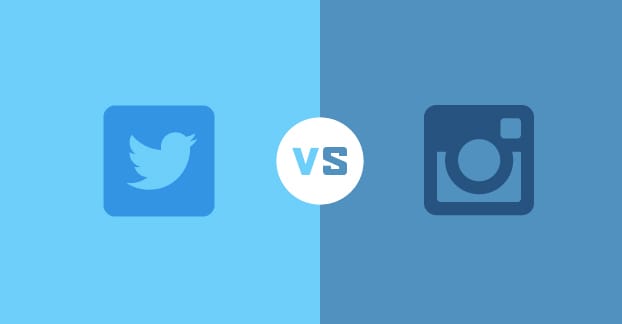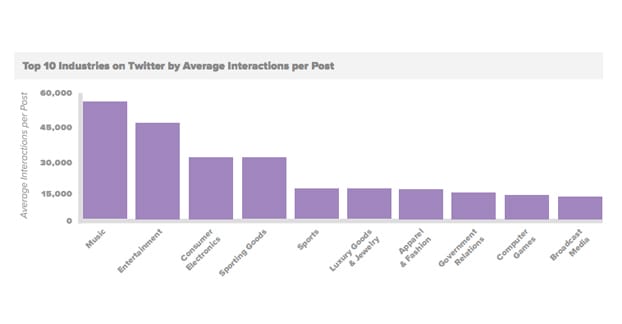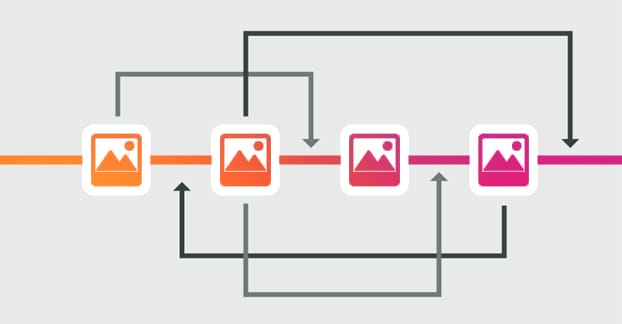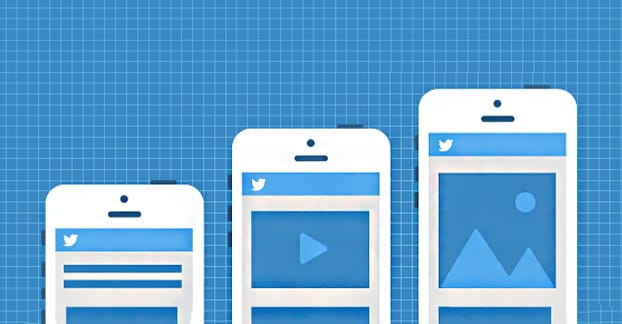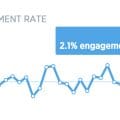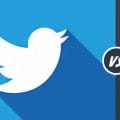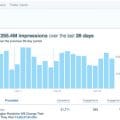Twitter and Instagram are at once very different platforms, and surprisingly similar. One is focused on small, short bursts of content and engagement; the other is highly visual and emphasizes the image over the words. Yet both use Hashtags, both have image-focused feeds, and both are good for direct engagement with your audience. The question is, which is better?
You ask which is better for engagement, but the fact is they can both be great, depending on what you’re using them for, what industry you’re part of, and if your audience is present.
The Easy Answer
The simplest possible answer to this question is easy: Instagram. A couple years back, a study of various social networks was performed, and it found something that shocked a lot of marketers: Instagram was by far, by orders of magnitude, the best social network for engagement.
Facebook has a larger audience. Twitter has more content. But Instagram was the king of kings when it came to pure engagement rates.
Instagram has a lot of things going for it. For one thing, they’re guaranteed to be a highly visual platform, and they do it in a way that’s more focused on photographs, candid images, and illustrations rather than logos, cheesy branded graphics, and the sort of basic infographic slice or ebook cover you’ll see on Twitter all the time. This means you get more content that is candid or behind-the-scenes in style, which tends to be more engaging to the typical audience than corporatized content.
Both Twitter and Instagram are heavily focused on mobile users, though Instagram had the advantage in that you can’t actually post to their site on desktop; you absolutely need to use a mobile device to use the site. Twitter has their desktop interface and a thousand social media manager apps to use.
Twitter does have the advantage in terms of influencer marketing. Instagram is more focused on broadcasting to and engaging with your users, your customers, your audience. Twitter enables a lot of B2B communications and influencer sharing, where you can network and engage with other big names in your industry.
The Industry Story
The fact is, there’s a lot of variation in how effective a social network is based on a bunch of different factors. One such factor is industry. If you’re a B2B brand selling metal washers to machine shops, you’re probably not going to have much of an audience on either site. If you’re a cake shop selling customized cupcakes, you’ll have a ton of people on both sites, but particularly the visual medium of Instagram. Thankfully, Track Maven does an annual study about this exact thing.
Called the Social Media Industry Index, Track Maven surveys the content that goes through their platform, which includes over 40,000 companies across 130 industries, and across Facebook, Twitter, Instagram, and LinkedIn. I’m disregarding Facebook and LinkedIn for this article, but if you’re curious how they stack up, you can read the full PDF for the 2016 survey at the link above. The 2017 index hasn’t yet been released.
One of the first things you see in the survey is that the average number of interactions per post, per 1,000 followers, tells a clear story. Twitter has near 0, LinkedIn has closer to 2, Facebook is about 6, and Instagram is up in the 50-70 range. However, even in the first half of 2016, Instagram is trending downwards, from 70 to almost 50.
Part of the reason for this is, well, all the articles like this one, which tell you just how good Instagram is for your brand marketing.
Part of the reason Instagram was an excellent haven for engagement was the barrier to entry. Being forced to use a mobile device, and the lack of API for posting – thus eliminating the ability to use business management tools – was too steep a barrier for most businesses. That, and the general impression of the network as casual and for “teenage girls sharing selfies” made it a poor prospect in the minds of many marketers.
Essentially, it was a walled garden that no one could see inside.
Then some brands started experimenting, and their results were astonishing. Where other social networks had engagement rates in the tenths or hundredths of a percent, Instagram had full percentages. Those brands that tried it out quickly found themselves dealing with engagement rates they had never seen before.
News got out, and brands started to flood the site. Apps started to appear, working around the posting limitations, some of which still work. Instagram has shut down some posting apps from time to time, one of the more recent victims being Mass Planner, but some still work.
Now, as happens on every social network, engagement is dropping. As brands flood in, two things happen.
First, the sheer volume of content increases. When you go to Instagram and get into marketing on the platform, you read posts like Neil Patel’s ideal number of posts per network, and you see that you can post a dozen times per day and get a ton of engagement. So why not?
As volume increases, the filtering algorithms at work start to work harder. You know the statistic about how, on Facebook, you only see around 350 posts per day if you’re active, but if it was unfiltered you’d see over 3,000? Or whatever the actual figures are, I’m sure I’m misremembering them, but it’s the same scale. The same thing happens to Instagram, though the feed on Instagram isn’t filtered. It’s more like Twitter, where you see absolute tons of content, but rarely do you scroll far enough back in your feed to read everything that has been posted since your last visit.
You start to see lower engagement rates simply based on the fact that so much content is being posted so quickly that your users see less just because newer content is pushing yours down. So you post more to counteract that, but then so do other brands, just causing even more content to scroll the feeds even faster, in a cycle that keeps depressing engagement rates until you end up with Facebook or Twitter, with sub-1% engagement rates.
The second reason is that, as more content is posted and more brands jump into the game, both the quality of the content and the desire to engage with it drop. Brands go more low-effort high-volume in an attempt to capture as much attention as possible. Users get tired of the constant branded content and low-quality efforts, so they just stop engaging. Some leave the site entirely, citing how it has been “compromised” by all these companies using it to advertise instead of the genuine content it used to have. Much like how Instagram was the destination for them when they migrated away from other networks. They’ll move on to the next big thing, and then brands will follow, and the cycle continues.
Back to Statistics
So, calling back to the Track Maven study, what can we learn about different industries on both sites? Are some industries going to do better on Twitter than Instagram, or are they all going to fare better on the visual Facebook-spinoff?
In terms of follower count, the top ten industries on Twitter are as follows: Broadcast media, newspapers, music, computer games, entertainment, animation, sports, online media, media production, and publishing. Broadcast media tends to have over twice the average of the rest, and close to 3x as many followers as publishing, to show you the curve.
Meanwhile, Instagram in terms of follower count is: entertainment, hospitality, music, photography, defense/space, sports, marketing/advertising, consumer services, broadcast media, and retail. Entertainment is around double what retail shows, so the curve isn’t as steep. You’ll note that many of these are more visual, particularly photography, space, sports, and hospitality. Instagram is generally known as The Best Social Network for photographers, in particular.
In terms of interactions per post – Twitter engagement – the top ten are: Music, entertainment, aviation/aerospace, computer games, farming, sporting goods, animation, sports, political organizations, and broadcast media. It’s worth noting here that music is up to close to 1,750, while number two, entertainment, is about 500. Musicians are extremely active and engaged on Twitter, with 6 of the top 10 Twitter accounts belonging to musicians of some kind. Though I suppose Justin Timberlake hasn’t been known for his music since around 2008, so it could be 5/10 instead.
For Instagram engagement per post, music tops the charts again, followed by: entertainment, consumer electronics, sporting goods, sports, luxury goods and jewelry, apparel and fashion, government relations, computer games, and broadcast media. Again, visual, and again with music up top. It all comes down to the back-stage feel, more than anything.
Music in particular is an interesting example. Big musicians are celebrities, and thus are subject to the big gossip and larger-than-life status of most celebs, but between Instagram and Twitter, people get a glimpse at their inner life. Twitter allows them to broadcast show and album information, but also to bring out their opinions and talk about what they’re doing from day to day. Some even do spontaneous bursts of fan charity, like Nikki Minaj recently paying off a lot of fan school debt. Meanwhile Instagram shows their life in visual slides, as well as giving every fan the back-stage experience that usually only comes with VIP tickets.
If we operate under the assumption that Instagram is going to have more average followers for an account, and more average engagement per post, are there any industries that are decidedly better on Twitter? I’ve combed through the Track Maven index to pull them out.
- Airlines and Aviation tend to have many more followers, but fewer engagement actions. Sensible, because they often use Twitter for customer service, questions, and delay notifications. The same goes for many industries, actually; most of them have more followers on average, because of the accessibility and customer service options Twitter offers.
- Farming, interestingly, is an industry doing much better on Twitter. They have far more average followers and more engagement per post on Twitter than on Instagram.
- Medical Practice tends to have about half as many average followers on Twitter than on Instagram, but twice as much engagement on Twitter.
- Public Policy has half as many followers on Twitter as on Instagram, but the same interactions per post.
- Some industries also simply have no data for one network or the other. “Alternative dispute resolution” has nothing for Instagram. Computer hardware has more of a follower presence on Instagram, but no data for interactions per post. Dairy has no interactions on either site. “Facilities” has nothing for Instagram. Investment Banking is listed with 0 instead of – in the table, but that doesn’t mean much. Same with Law Enforcement and Legal Services. Likewise mental health care, mining, program development, public safety, railroads, renewables, security, translation, vets, and wireless. If some of these industries seem redundant, well, they do to me too so I’m not sure how Track Maven categorizes them.
It’s worth noting that, while this is a fairly broad survey of 40,000 companies, it’s still biased towards just companies that use Track Maven. They simply might not have the saturation in some industries to get a representative sample. Take the information with a grain of salt.
At the end of the day, though, it’s clear that Instagram is going to be more engaging in general than anything else, with a very few scant exceptions. However, I will still recommend using Twitter regardless. It’s a great platform for influencer marketing, again, and is good for customer service. Both are harder to get on Instagram.
